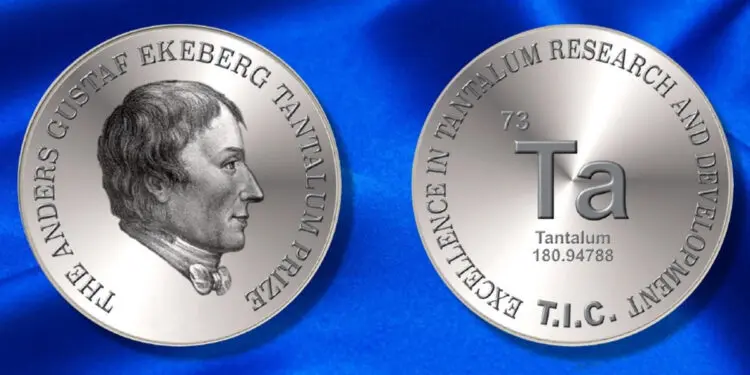Tantalum-Niobium International Study Center (T.I.C.) announced winner of the 2021 Anders Gustaf Ekeberg Tantalum Prize: US-Japanese team led by Dr Jason M. Davis of the Center for Materials Processing and Tribology at Purdue University, IN, USA.
The paper “Cutting of tantalum: Why it is so difficult and what can be done about it” was published in the journal International Journal of Machine Tools and Manufacture (available here).
Announcing the winner, the independent judging panel led by former T.I.C. President Dr Axel Hoppe stated that cutting tantalum was a subject which had interested metallurgists for decades and the paper offered important new considerations on the topic. The panel praised the high standard of publications on the 2021 shortlist and congratulated all their authors, who are challenging the boundaries of current knowledge of tantalum.
On receiving the Ekeberg Prize, Dr Davis said “We are honoured and humbled that the publication was chosen for the award”. The T.I.C. congratulates all entrants whose papers challenge the boundaries of knowledge regarding tantalum, and may well lead to significant breakthroughs into exciting new applications of the element.
The authors of the winning paper are Dr Jason M. Davis, Dr Mojib Saei, Debapriya Pinaki Mohanty, Dr Anirudh Udupa, Dr Tatsuya Sugihara, and Dr Srinivasan Chandrasekar. The team mostly work at the Center for Materials Processing and Tribology at Purdue University, IN, USA, while Dr Tatsuya Sugihara is based at the Department of Mechanical Engineering, Osaka University, Japan. Dr Davis also works at the US Special Warfare and Expeditionary Systems Department, Naval Surface Warfare Center in Crane, IN, USA.
The Ekeberg Prize will be awarded during the T.I.C.’s in-person General Assembly, which this year will be held in London, UK, from November 14th to 17th. Full details are available at https://www.tanb.org/event-view/62nd-general-assembly.
The full winning paper will be re-printed in the TIC October 2021 Bulletin (issue #187).































